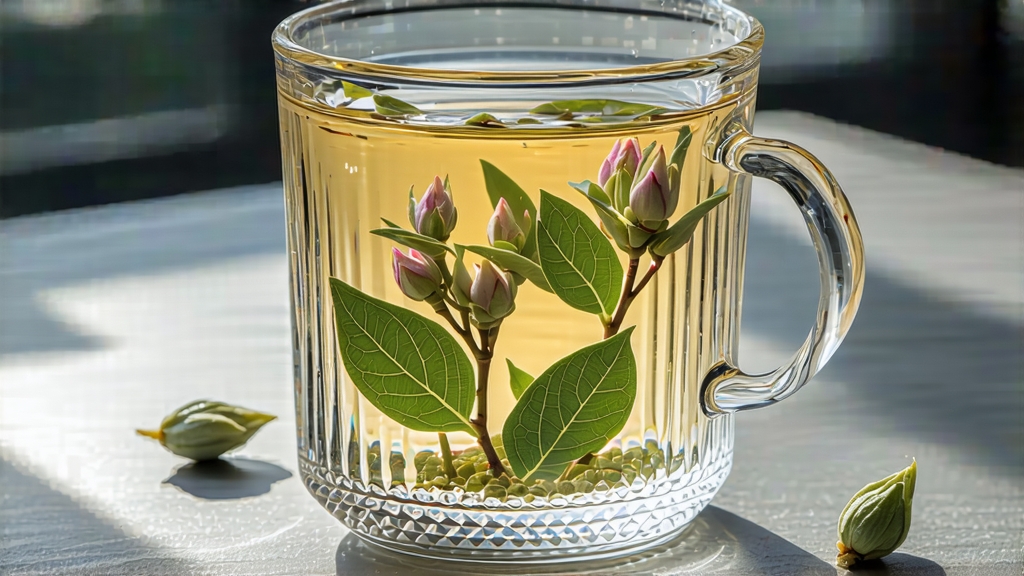
Bai Hao Yin Zhen—literally “White Hair Silver Needle”—is the quiet aristocrat of Chinese white tea. To the uninitiated it may look like a jar of pale pine needles, but in the hands of a practiced tea master those down-covered buds become liquid moonlight, releasing aromas of fresh lychee, cucumber skin, and the faint sweetness of mountain air after rain. Revered since the Song dynasty, celebrated by Ming scholars, and once reserved for imperial tribute, Silver Needle is now stepping onto the global stage, inviting drinkers everywhere to taste a millennium of Chinese restraint and refinement.
1. Historical whispers
The first written record of “white tea” appears in Song Hui Zong’s Daguan Chalun (1107 CE), yet the specific praise for buds “silver as frost” is traced to Fujian’s Fuding county during the Ming. By the late Qing, Fuding’s Silver Needle was freighted down the Min River to the port of Fuzhou, where European merchants mistook its pale color for oxidation failure but soon coveted its mellow, non-astringent cup. In 1891 the tea won gold at the Melbourne International Exhibition; in 1915 it repeated the feat in San Francisco. Thus a county-level tribute became a global luxury, carried on clippers and later on steamships to London, St. Petersburg, and New York.
2. Terroir and taxonomy
White tea is officially defined not by leaf color but by process: no pan-firing, no rolling, only withering and drying. Within this minimalist family, Bai Hao Yin Zhen stands at the apex because it uses only unopened leaf buds. Two micro-regions hold Protected Geographical Indication status: Fuding and Zhenghe, both in northern Fujian. Fuding, on the eastern slope of the Taimu mountain range, gives buds that are plumper and hairier, yielding a lighter, more floral liquor. Zhenghe, slightly higher and more humid, produces slimmer buds with a deeper, riper sweetness reminiscent of dried apricot. Purists debate which is “true” Silver Needle, yet both share the same cultivar roots: Fuding Da Bai and Zhenghe Da Bai, big-white tea trees selected over centuries for their oversized buds and downy trichomes.
3. The craft of doing almost nothing
Harvest begins at dawn on the first warm day after the Qingming festival, when the bud reaches 2.5–3 cm but has not yet unfurled. Pickers wear cotton gloves to avoid bruising the trichomes, snapping each bud with a soft click of the fingernail. A full kilo of finished tea requires roughly 30,000 buds, all plucked within a ten-day window.
The buds are then spread on bamboo trays exactly 1.5 cm thick. For the next 36–48 hours they rest in a shaded pavilion whose louvers are adjusted every half hour, allowing mountain breezes to carry away moisture while the downy hairs trap a micro-climate of aroma. Ambient temperature hovers at 22 °C, relative humidity at 65%. No machines, no heated air—only patience. When the bud’s moisture drops to 10%, a final charcoal bake at 40 °C finishes the tea, locking in a residual 5% water, low enough for decades of aging yet high enough to keep the bud supple. The entire process is less cooking than choreography, coaxing the leaf to surrender its greenness without ever forcing it.
4. Aging: the quiet transformation
Unlike green tea, Silver Needle improves with age. Over years the residual enzymes continue a slow oxidation, turning the bud from silvery-green to pewter and finally to warm grey. Aroma molecules polymerize, trading fresh lychee for honeyed fig and polished wood. Experienced collectors store the tea in unglazed clay jars layered with kraft paper, maintaining 50% humidity and 25 °C. A 2012 Fuding cake we tasted recently offered notes of white peach, sandalwood, and a cooling camphor finish—proof that white tea, often billed as delicate, can evolve into a contemplative powerhouse rivaling well-aged pu-erh.
5. Brewing: precision through gentleness
Silver Needle is forgiving, yet attention to detail elevates it from pleasant to transcendent.
Water: Use still spring water at 80 °C. Anything hotter scalds the down,